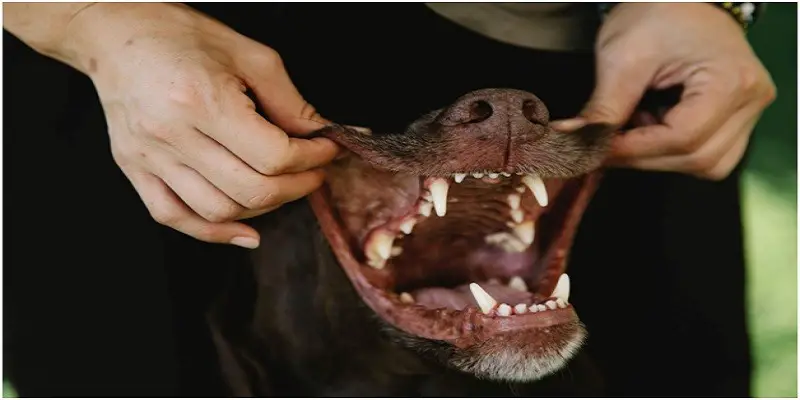Dog owners are responsible for the entirety of their dog’s care. Starting from the time you bring your new puppy home from a local puppies for sale, you have to care for both their mental and physical health. From toilet training to obedience, playtime to crate time, your dog relies on your preparation, knowledge and experience to have the best life possible. One often overlooked facet of caring for a dog is its dental health.
Why Is it Important to Take Care of Your Dog’s Teeth?
Good dental health is important for all animals, especially dogs. Many dog owners are unaware of the importance of their pet’s dental health and how to properly care for it but sometimes joining community dog groups could be useful. While brushing your puppy’s teeth may sound like a daunting task, regular canine dental care is essential for avoiding painful and costly dental problems down the line.
The most obvious reason to take care of your dog’s teeth is to prevent bad breath and other oral diseases such as tooth decay and gum disease. Poor dental hygiene can lead to a wide range of health issues, including infection, pain and even organ damage if dental issues are left untreated.
In addition, poor dental health can also cause behavioural problems in dogs since they are unable to express their discomfort in any other way than through barking, growling or snapping at anyone who approaches. Keeping up with regular brushing will help keep your pet’s mouth healthy and smelling fresh.
In addition to preventing bad breath and oral diseases, proper canine dental care can also help protect your dog from systemic illnesses caused by bacteria entering the bloodstream through inflamed gums or infected teeth roots. Even if your dog already has an underlying medical condition that affects his or her teeth, proper dental hygiene can help reduce the risk of further complications developing from bacteria entering the bloodstream due to poor oral hygiene habits.
How to Take Care of Your Dog’s Teeth?
Fortunately, there are several steps you can take to keep your dog’s teeth and gums healthy:
Brushing Your Dog’s Teeth Regularly
Brushing your dog’s teeth should be done at least two to three times a week, but daily brushing is ideal. Start by getting the right toothbrush and toothpaste for your dog. Most pet stores carry special canine toothbrushes and toothpaste that are safe for dogs.
Place a small amount of the paste on the brush and let your pup taste it; this will help them get used to brushing time. Begin by gently massaging their gums with your finger in circular motions while speaking in a calming voice. This will make them comfortable with having their mouth touched. Once they are used to it, you can begin brushing their teeth using short strokes all around the outside surfaces of each individual tooth as well as along the gum line.
Make sure you pay close attention to the back molars where plaque can build up easily. After brushing, reward them with lots of praise and play!
Provide Dental Chews or Toys
Dental chews or toys can help reduce plaque buildup between regular brushings by scraping off some of the buildups from between their teeth. You should always check ingredients in these items before purchasing them though, as some may contain sugar or other unhealthy additives that could be harmful to your pup if ingested too often.
Additionally, be mindful when providing any chew toy or bone, and choose chews that are appropriate for your dog. There are different hardnesses for different levels of jaw strength and tooth type, so smaller dogs will often need softer chew toys than bigger, stronger dogs. If necessary, speak with your veterinarian about the correct chew toy for your specific dog/
Schedule Regular Vet Visits
Just like humans, it’s important to schedule regular dental checkups for your dog. During these visits, the vet will check for any signs of periodontal disease such as inflammation or infection around their gums, as well as receding gum lines that indicate loss of bone support caused by bacteria-laden plaque buildup.
The vet may also recommend a professional cleaning under anaesthesia if needed – this usually involves scaling (removing tartar) and polishing (smoothing rough surfaces). These procedures are typically done during annual health exams but may need to be done more frequently depending on your dog’s dental health.
Feeding Healthy Diets
Diet also has an impact on overall dental health — dry kibble helps scrape away food particles from between their teeth while wet food tends to stick more which can lead to additional plaque buildup. If possible, opt for the highest-quality food you can get. Less fillers and additives mean your dog will get the most out of their food and have a lower chance of developing dental problems. Additionally, avoid giving treats that are high in sugar content as those can quickly lead to cavities.
Final Words
Taking care of our beloved furry friends’ mouths should be just as much part of our routine maintenance schedule as regular grooming or vet visits; after all, poor dental hygiene can cause discomfort for our pets and lead to long-term health problems. By following these tips, you can ensure your dog will have a happy smile both now and throughout its life!
Last Updated on May 10, 2025 by Pauline G. Carter

